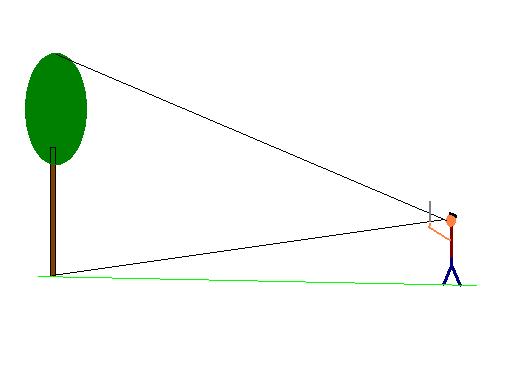 Stimulating
Understanding of
Computational science through
Collaboration,
Exploration,
Experiment, and
Discovery for students with
Hearing
Impairments
Stimulating
Understanding of
Computational science through
Collaboration,
Exploration,
Experiment, and
Discovery for students with
Hearing
Impairments
 Stimulating
Understanding of
Computational science through
Collaboration,
Exploration,
Experiment, and
Discovery for students with
Hearing
Impairments Stimulating
Understanding of
Computational science through
Collaboration,
Exploration,
Experiment, and
Discovery for students with
Hearing
Impairments |
a collaboration of the Shodor Education Foundation, Inc., Eastern North Carolina School for the Deaf, Barton College, the National Technical Institute for the Deaf, and
Interpreters, Inc.
|
|
|
For Teachers!
How to weight a tree
Activities:
Calculating the CO2 sequestered in a tree
Comparing the CO2
produced by a family or school to the CO2 sequestered in a tree.
Extension
Pick a tree at school or in the community that the students will see on a regular basis. When they see the tree they will think about the CO2 they are putting into the atmosphere. After you have picked a tree you need to identify its species. There are a number of fine identification keys available on the web (see "Resources").
Use a string and ruler to measure the circumference of your tree at chest height. If your tree is on a hill stand on the uphill side of the tree. Pace off a convenient distance from the tree (50 - 100 ft). Hold a ruler vertically at arms length. Line up the bottom of the ruler with the base of the tree. Using the ruler measure the apparent height of the tree. Measure the distance from your eye to the ruler.

Put your measurements into either the JavaScript calculators or the Excel spreadsheet (see "Downloads") these give you the height and diameter of the tree. Determine if your tree is a pine tree, Yellow poplar, Sweetgum, Hard Hardwood, or Soft Hardwood tree. Put this information into the appropriate JavaScript calculator or the Excel spreadsheet to find the tree's green weight. These values are good for the Southeastern U.S. If you live in a different area you could improve the accuracy of your calculations by getting the local variables from your extension agent and putting them into the algorithm.
Materials needed:
tree, string, ruler, tree identification key or book, calculator (pocket, JavaScript, or Excel), table of tree types (see "Resources")
How to calculate the CO2 sequestered in a tree
First you need to remove the water from your tree. Find your tree's dry weight/green weight in the resources table. Entering that into the Excel spreadsheet will give you the dry weight, carbon and CO2 sequestered by your tree. If you are using the JavaScript calculators you need to multiply the dry weight by .5 to get the weight of the carbon in the tree. This is the above ground weight. The roots weight approximately 20% of the above ground weight. The total tree weighs 120% of the above ground weight. Multiply the carbon in the tree by 3.66409.
Materials needed:
calculator (pocket, JavaScript, or Excel), dry weight/green weight in the resources table
Comparing the CO2
produced by a family or school to the CO2 sequestered in a tree
The average household drives 20,895 miles per year. Calculate the number of trees needed to sequester the CO2
produced by a family driving different kinds of
cars. How much CO2 is produced by your school buses each month? How much CO2 is
produced by teachers and students driving to school each month? How many trees
is this equivalent to?
On average electricity production in the U.S. produces 1.64 pounds of CO2/kWh. Find the number of kilowatt hours that the power plant can produce when it produces the amount of CO2 your tree has sequestered. Count the light bulbs in your class. Determine the kWh of electricity used by these lights each month. How many classes are there in your school? What is the electrical use of your school each month? How many months worth of CO2 is sequestered in your tree?
Natural gas produces .12 pounds of CO2/ft3. Fuel oil produces 22.29 lbs of CO2/gal. How many pounds of CO2 are produced to heat your school each month or for the winter months?
How many trees worth of CO2 is your school responsible for producing each month? Each year? How much area does your tree take up? How much of the football field would you have to plant in trees each year to sequester the CO2 your school produces?
Materials needed:
calculator (pocket or Excel), MPG for different vehicles (EPA is a good source
see "Resources"), school's energy use (electrical, natural gas, heating oil,
school bus fuel, check with principal and or central office).
Extension:
Which tree weight did you use, above ground, roots, or total weight? Why did you pick that one over a different weight? The green weight includes the leaves. They fall off each year and turn back into CO2. We don't have enough information to decide how to deal with these issues. The lesson „Forests, Mining Carbon from the Airš uses a professional model to explore carbon as it moves through a forest, its products and the atmosphere.
Copyright © 1999-2001 by The Shodor Education Foundation, Inc.
|
by the National Science FoundationOpinions expressed are those of the authorsand not necessarily those of the National Science Foundation. |

|